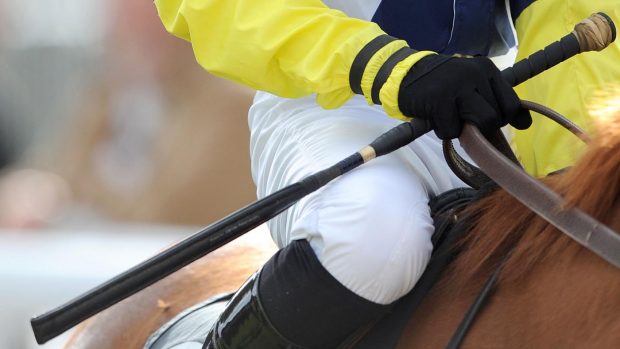The spotlight has fallen once again on the use of the whip in racing — and the need for equestrian sport in general to promote the best possible image to the public — following recent high profile whip bans.
Cue Card’s thrilling King George VI Chase win on Boxing Day (pictured top) was at risk of being overshadowed by jockey Paddy Brennan picking up an 11-day ban and £4,200 fine for overuse of the whip. Ruby Walsh, who was second on Vautour, received a two-day ban.
A week later Tom Scudamore received a seven-day ban aboard Soll at Sandown.
Both races were televised on Channel 4, sparking debate as to the place of the whip, and whether if a whip has been overused the winners should keep the victory.
At the World Horse Welfare conference in November former champion jockey John Francome echoed his previous calls to ban the whip in racing. “Does it look good? Definitely not,” he said. “People only really see horses on the television or at the races now and no one wants to see them hit. It’s important to improve public perception.”
H&H columnist Richard Johnson disagreed with the idea of a ban, saying that the whip is an important tool to make a horse concentrate, adding: “No jockey would ever intend to harm a horse.”
The British Horseracing Authority (BHA) said that there is “no welfare issue” with the use of the “energy-absorbing whip” that is used in Britain “if used correctly”.
The BHA’s Robin Mounsey added: “Britain is among the world leaders in terms of the regulation of use of the whip.”
In 2011 the industry came under fire after the Grand National and Jason Maguire’s overuse of the whip on winner Ballabriggs. The incident prompted strong reaction, leading to a review, and tougher rules were brought in, limiting whip use to eight times in a race on the Flat and nine times over jumps, with a focus on how the whip is used.
“The number of whip offences has decreased by 40% since the introduction of the new rules in early 2012, despite an effective halving of the threshold for use,” added Mr Mounsey. “However, the fact that these thresholds are set at such a low level, combined with the air-cushioned design of the whip, mean that it is highly unlikely that anything but severe breaches of the rules could result in a welfare issue.”
The BHA is to look at recent data to “ascertain whether the penalty structure is providing enough deterrent to prevent ‘win-at-all-costs’ style riding”.
“If necessary we can look at ways to alter that penalty structure to ensure the deterrent is sufficient, while remaining fair,” said Mr Mounsey.
John said that by banning the whip jockeys would also be forced to think more when they are riding.
Jockeys would have to “keep both hands on their reins, lengthen their stirrups and work around 20% harder,” he added.
This is an opinion similar to that of dressage rider Richard Davison, who told H&H that if draw reins were banned riders would have to find “more effective techniques to train their horses”.
John believes a whip should still be carried for safety in terms of steering.
World Horse Welfare told H&H it does not believe that the whip should be banned in racing as it fulfils an important safety role.
“However, the general public are increasingly questioning its use, which is why we believe this deserves a greater debate,” said the charity’s Roly Owers.
“Too many jockeys are still breaking the whip rules, which places horse welfare at risk and fuels concerns among the public.”
Have your say
Horse&Hound, 14 January ’16





